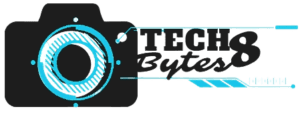Introduction to DragGAN Ai Photo Editor
DragGAN is a web app. It lets users deform images naturally and realistically. It uses a pre-trained GAN to make new images. It bases them on the user’s input. DragGAN can handle a variety of images, such as faces, animals, landscapes, and more.
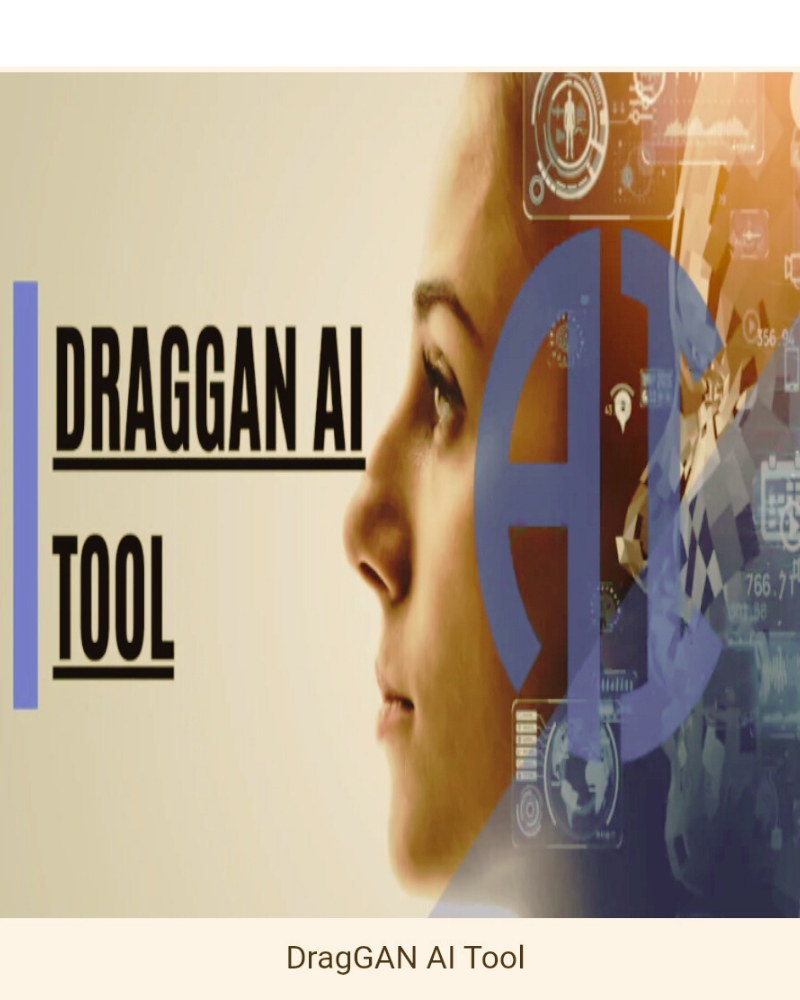
DragGAN is a novel AI technique for editing images using simple mouse gestures. It allows users to change the shape, pose, and look of objects in images. They do this by dragging points on the image. DragGAN uses a deep neural network. It infers the 3D shape and texture of the object. Then, it makes a realistic image that matches the user’s goal. DragGAN can handle many objects, like faces, animals, cars, and furniture. It can make high-quality results quickly.
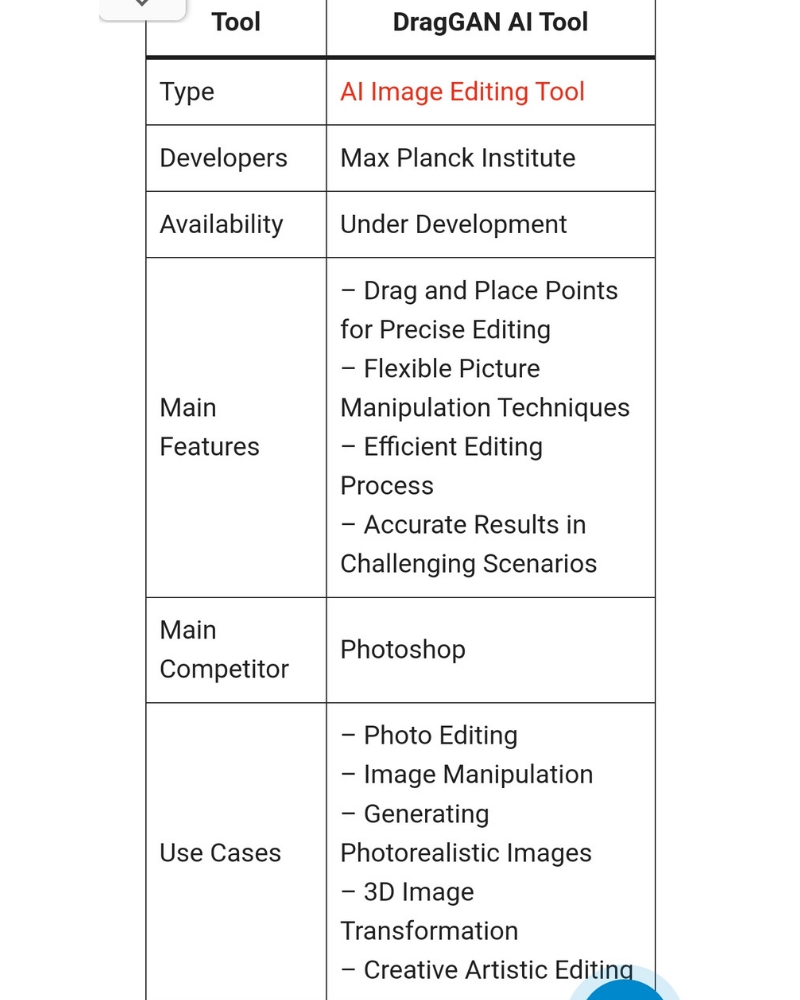
Some of the features and benefits of DragGAN
Intuitive and interactive:
DragGAN lets users edit images with a few clicks and drags. It does not need any prior image editing skills. Users can see the results instantly and adjust them as they wish.
Powerful and versatile
DragGAN can handle complex changes. It can, for example, change the viewpoint, orientation, shape, and expression of objects. It can also add or remove parts of the object. DragGAN can also transfer the style and color of one object to another. This creates new and artistic effects.
Realistic and consistent:
DragGAN uses a GAN to make realistic images. They keep the details and quality of the original image. DragGAN also makes sure the edited image fits the scene’s background and lighting.
What is DragGAN?
DragGAN is an innovative AI photo editing tool. It allows users to interactively edit images with great precision. Users can drag specific points in the image. This controls the pose, shape, expression, and layout of objects. It uses Generative Adversarial Networks (GANs). It has a motion supervision mechanism and point-tracking approach. DragGAN enables anyone to warp images. They can achieve realistic outputs, even in tough cases. Features and Functionalities: Superior Control: DragGAN offers better control. It is more flexible than previous methods. Image Manipulation: It showcases its effectiveness in both image manipulation and point-tracking tasks. Realistic Outputs: The system generates realistic images while allowing precise adjustments.
How DragGAN works.
DragGAN uses a Generative Adversarial Network (GAN). A GAN is a type of deep learning model. It can generate realistic images from random noise or latent vectors. A GAN consists of two neural networks: the generator and the discriminator.
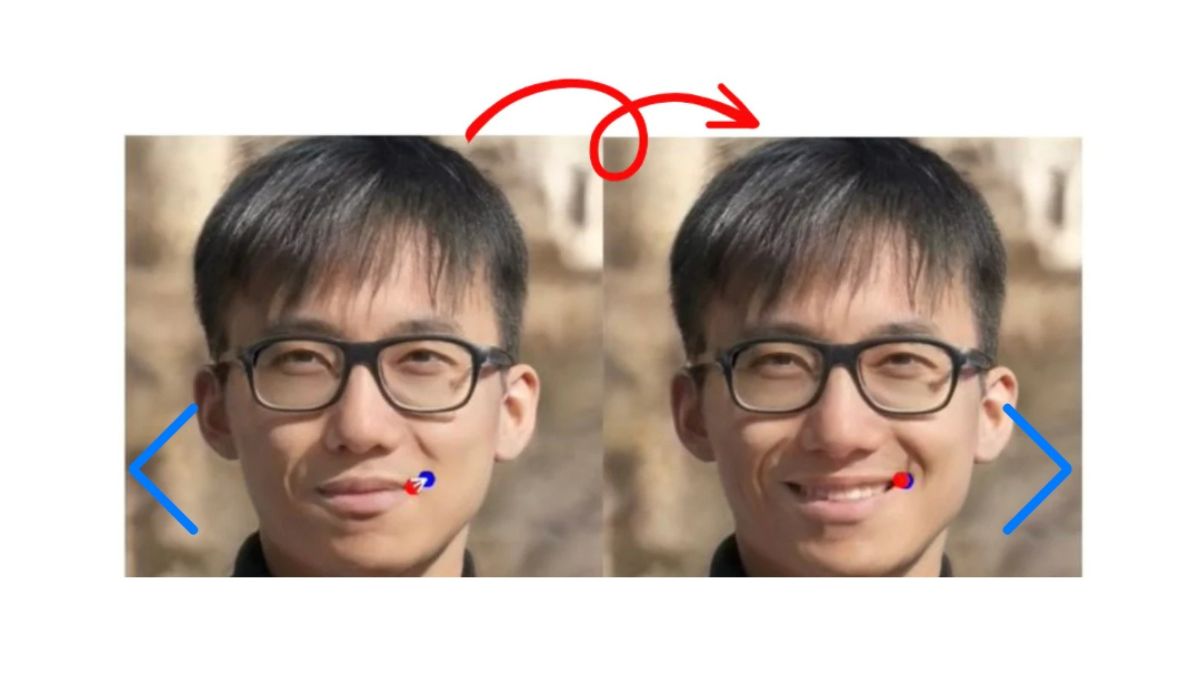
The generator tries to make fake images look real. The discriminator tries to tell real and fake images apart. The two networks compete with each other in a game. The generator aims to fool the discriminator. The discriminator aims to catch the generator. This way, the generator learns to produce more realistic images over time. Synthesizing User Input: DragGAN allows users to control the GAN.
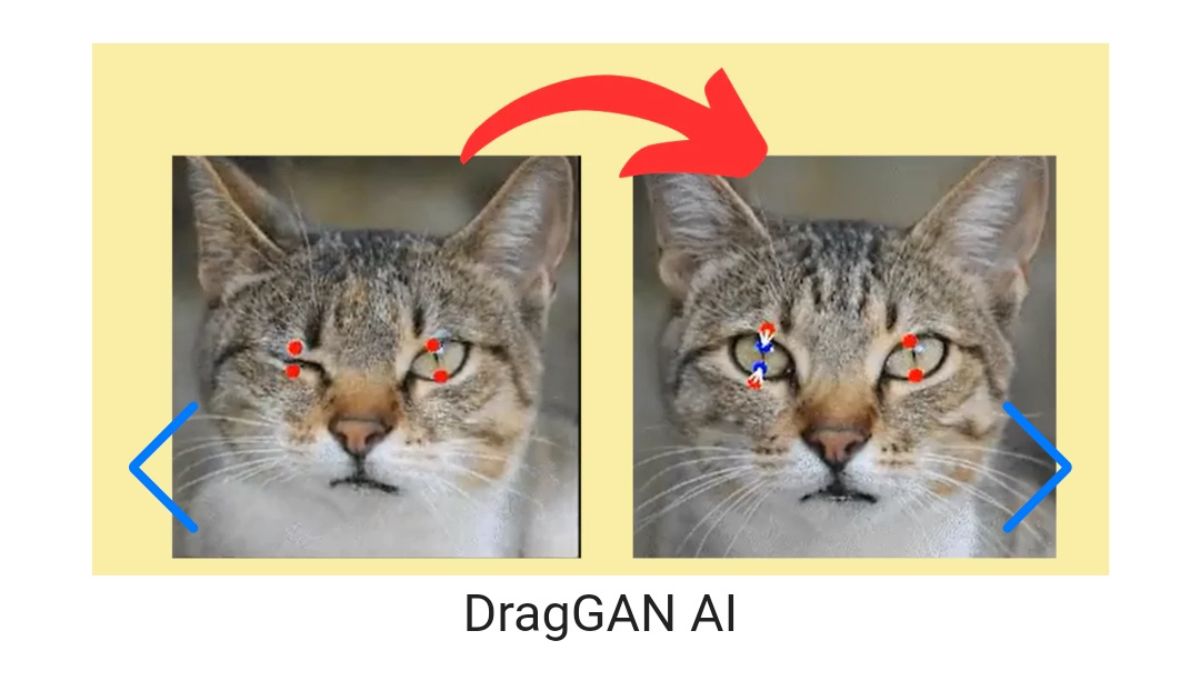
They do this by moving points on an image. Control points are small circles. The user drags them to change the shape, pose, or appearance of the image. For example, the user can drag a control point on the nose of a face image to make it longer or shorter. The GAN then makes these changes. It also keeps the image real. It balances creativity with naturalness. It uses a feature-based motion supervision technique. This technique drives the control point to move towards the target position. It also uses a point tracking approach. This approach uses the discriminative GAN features. It uses them to keep finding the position of the control points.
Using DragGAN.
Visit the DragGAN Website. To use DragGAN, go to [https://draggan.github.io/]. There you can find more about the project, the team, and the publications. You can also access the demo and the GitHub repository from there.
Upload an image.
On the DragGAN website, click the Demo button to launch the interactive interface. There, you can pick an image from your device or from the preloaded samples. Then, you can upload it to the DragGAN server.
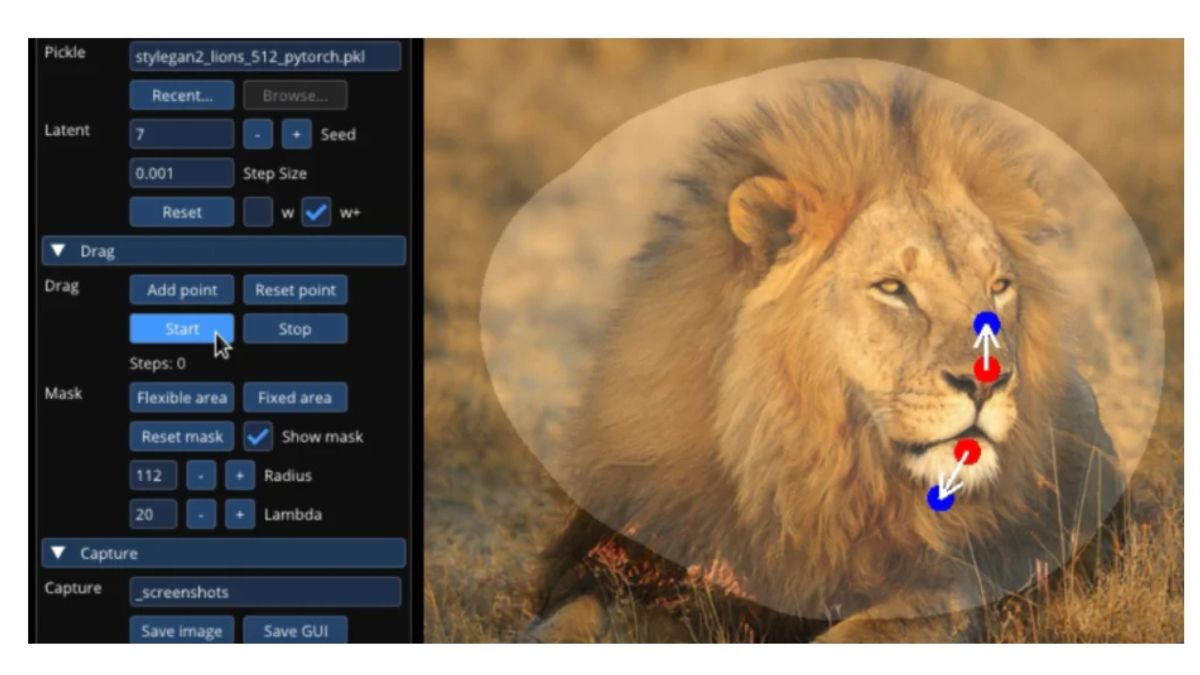
The image should be in JPG or PNG format and have a resolution of at least 256×256 pixels. After uploading the image, you will see it on the left side of the interface. It will have some control points on it.
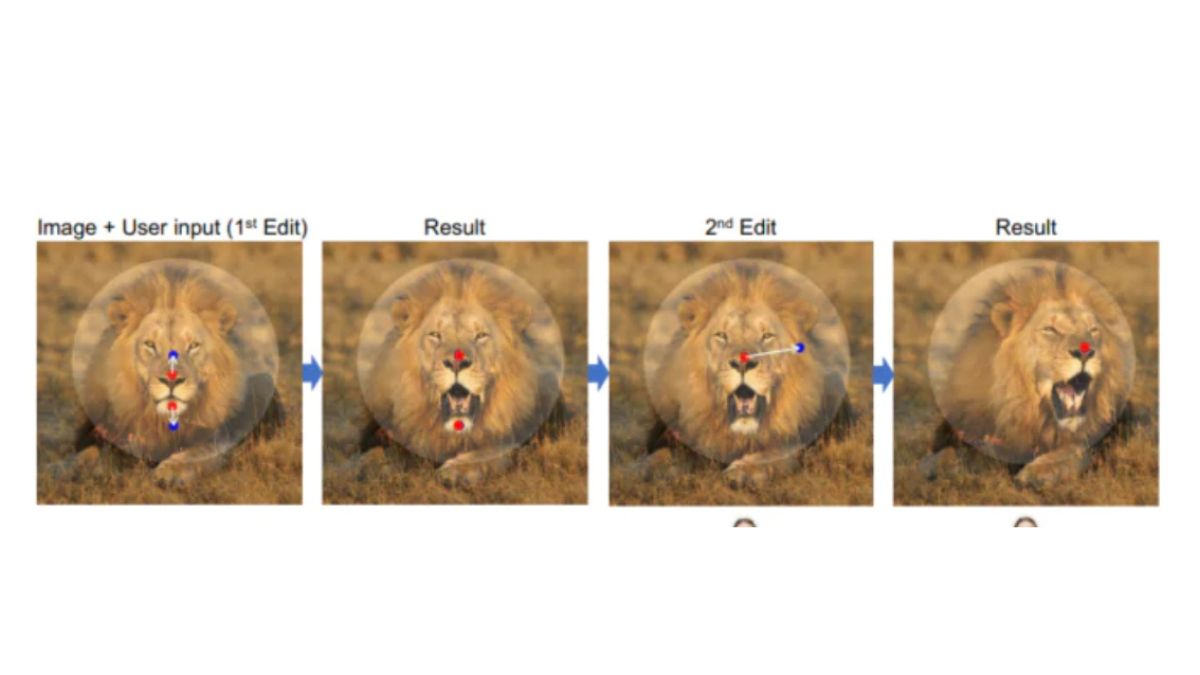
Drag control Points :
These control points are small circles. You can drag them with your mouse or touchpad to change the shape, pose, or look of the image. For example, you can drag a control point on the nose of a face image to make it longer or shorter. You can also add or delete control points by clicking on the + or – buttons on the top right corner of the interface.
Release Points:
After you move the control points where you want, you can release them and wait a few seconds.
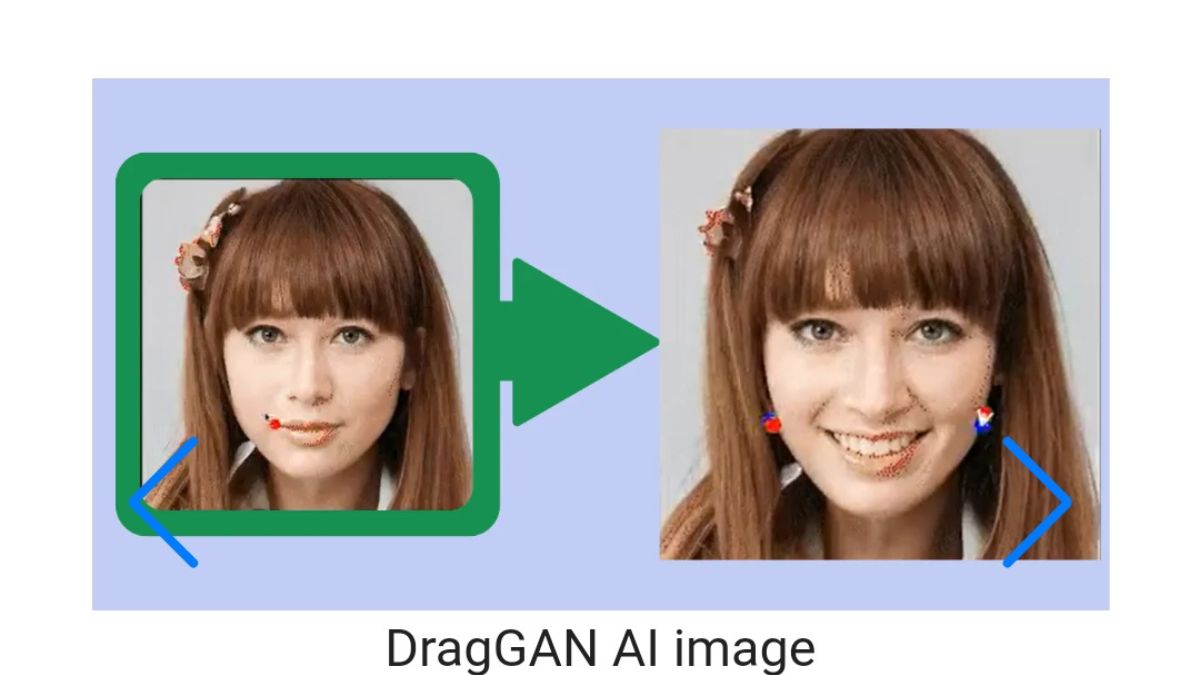
DragGAN will apply the edits based on your changes. It will then show you the resulting image on the right side. You can compare the original and the edited images. See how DragGAN balances creativity with naturalness. You can also save the edited image to your device. To do this, click the Save button on the bottom right corner of the interface.
Applications and impact of DragGAN.
Deforming Images for Creativity: DragGAN lets users deform images in creative ways. This is not possible with standard image editing tools. For example, users can change the style, color, or texture of an image. They can also create new shapes or patterns from existing ones. DragGAN can also make new images from scratch. You do this by dragging control points on a blank canvas.
DragGAN is a powerful tool. It lets you experiment with looks. You can explore new art forms.
Pose and Shape Manipulation: DragGAN allows users to change poses, shapes, and expressions of images. Users can change the orientation, position, or size of an image. They can also modify specific parts of it, like facial features, limbs, or accessories. DragGAN can also generate realistic animations by interpolating between different poses or shapes.
This flexibility opens up new possibilities for creating dynamic and expressive images.
Natural and Realistic Image Generation: DragGAN can make images that look realistic. It can also handle user edits. This ensures the resulting images look natural and convincing.
DragGAN uses a feature-based motion supervision technique. It keeps the meaning and structure of the image. It also uses a point tracking approach. This approach uses the GAN’s features to find the position of the control points. DragGAN can also handle complex and diverse images. These images can be of faces, animals, cars, or landscapes. It can generate high-quality, high-resolution images.
System Requirements For DragGAN AI
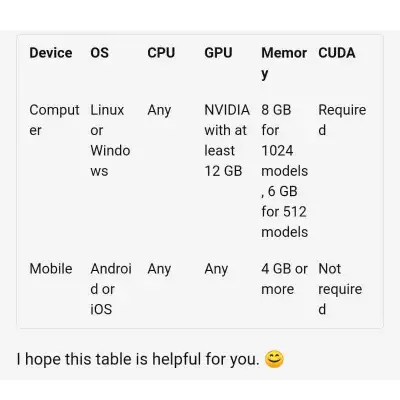
Final Words DragGAN Ai Photo Editor
Significance of DragGAN
In the world of photo editing, DragGAN stands out. It is easy to use. Its open-source nature encourages collaboration and innovation. DragGAN lets users change images by dragging points on the generative image manifold. This is a high-dimensional space that represents the variations of natural images. This allows precise and easy control. It’s over the look, position, and shape of the objects in the image. DragGAN also uses the GAN’s learned features to track handle points across images. This ensures consistency and realism. DragGAN works on many domains. These include faces, animals, cars, and flowers. Accessibility
Whether you’re a pro or an amateur photographer, DragGAN makes image editing easy for many. It democratizes image manipulation. DragGAN doesn’t need prior knowledge. You don’t need expertise in image editing. You just drag points on the image. DragGAN is also an open-source project. Anyone can download, use, modify, and contribute to it. DragGAN has a simple, interactive interface. You can access it through a web browser or a mobile app.
DragGAN aims to make image manipulation fun and easy for everyone. Remember, while DragGAN is a powerful tool, it’s essential to use it responsibly and ethically.visit
Frequently Asked Questions
What are some limitations of DragGAN?
DragGAN is a powerful tool for interactive point-based manipulation. It operates on the generative image manifold. But, it also has some limitations. For example, DragGAN requires a pre-trained GAN model. This model can generate realistic images. They are of a desired category, like animals, cars, and humans. DragGAN also depends on the quality of the GAN inversion process. It may not always produce accurate latent codes for real images. Also, DragGAN may struggle with big deformations or complex changes. These may go beyond the learned manifold of the GAN.
What are some alternatives to DragGAN?
Alternatives to DragGAN include GANSpace, StyleFlow4, and GANimal. They can achieve similar effects. These methods use different techniques to manipulate the latent space of GANs. Examples include principal component analysis, normalizing flows, and cross-domain mapping. But, they may not offer the same level of precision and flexibility as DragGAN. DragGAN allows users to directly drag any points on the image to the desired positions.
How does DragGAN handle privacy and security of user data?
DragGAN does not store or transmit any user data, such as images or latent codes. It does not send data to any external servers or databases. The user’s device performs all the computations locally. We use the pre-trained GAN model and the DragGAN algorithm. Therefore, DragGAN respects the privacy and security of the user data. It does not expose them to any potential risks or threats.
Can I use DragGAN for scientific research?
Utilizing DragGAN for scientific research: Researchers can use DragGAN for scientific research purposes. The user must follow the original paper and code’s license and citation guidelines. DragGAN can be a useful tool for exploring the generative image manifold. It helps understand the properties and behaviors of GANs. DragGAN can also help with various applications. These include image manipulation, data augmentation, image editing, and artistic creation.
What is a generative image manifold?
A generative image manifold is a high-dimensional space. A GAN model generates all the possible images contained within it. Latent codes represent the images on the manifold. These are vectors of numbers. They control the appearance and attributes of the images. The image manifold is compact. It is a continuous representation of the natural image distribution. It captures the variations and correlations among different images.
How does DragGAN compare to other photo editing tools?
DragGAN is different from Photoshop, GIMP, and Snapseed in several ways. First, DragGAN does not require manual annotation or image segmentation. It can automatically track and manipulate any points on the image. Second, DragGAN does not modify the pixels of the image directly. Instead, it changes the latent code of the image to ensure the realism and consistency of the output. Third, DragGAN can generate novel content not in the original image. This includes occluded parts, new poses, and different shapes. It does this by using the GAN model’s generative power.
Can I use DragGAN for commercial purposes?
You can use DragGAN for commercial purposes. DragGAN is an open-source project released under the MIT license. This means anyone can use, copy, modify, and share DragGAN. They can do so for any purpose, including commercial ones. They just need to give credit to the original authors and include the license notice in their copies. However, the user should also be aware of potential ethical and legal issues. These issues may arise from using DragGAN for commercial purposes. Examples include intellectual property rights, consent, and fairness. The user should also obey the licenses and terms of use for the pre-trained GAN models that DragGAN uses. They may have different or stricter conditions than DragGAN itself.
